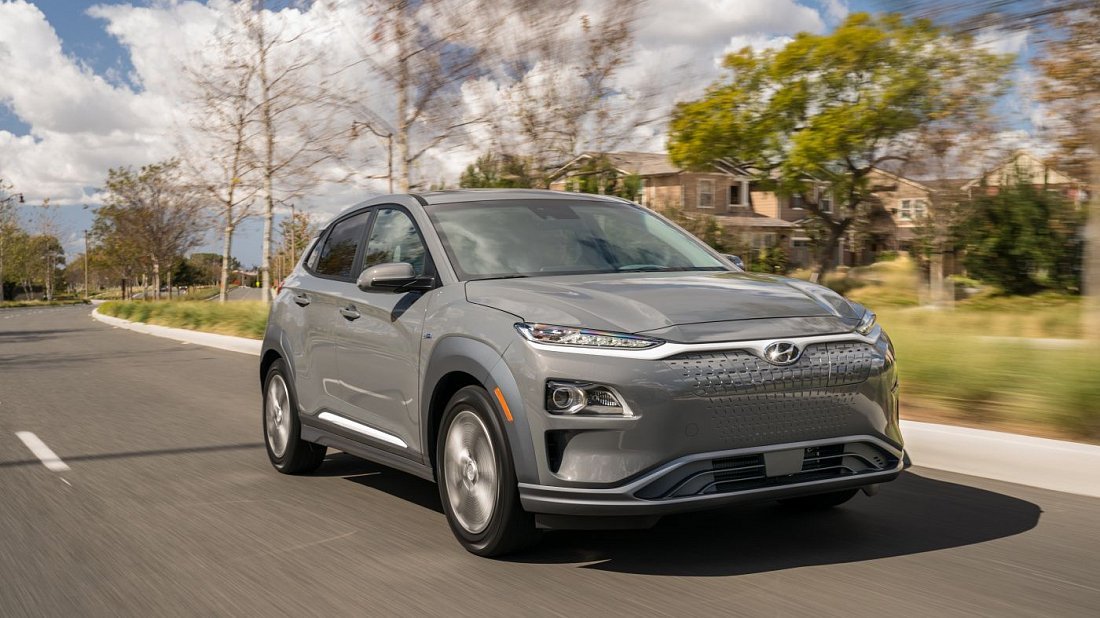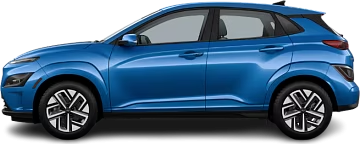NEMA 5-15
- Socket specs
Socket specs
- 120 V, 15 A, 1-phase
- Socket output
Socket output
- 1.8 kW
- Charging 20-80%
Charging 20-80%
- 14 h 31 min


The Hyundai Kona Electric 39 kWh is an all-electric front-wheel drive SUV. It came out in 2021.
The Hyundai Kona Electric 39 kWh has a 42 kWh battery pack, allowing it to travel up to 161 mi on a single charge. The car has an average efficiency of 24.3 kWh per 100 miles (or 243 Wh/mile) — ranked №463 out of 575 electric vehicles.
The Hyundai Kona Electric 39 kWh can accelerate from 0 to 60 mph in 9.2 seconds (ranked №439 out of 575 electric vehicles) and reach a top speed of 96 mph.
The car’s powertrain delivers up to 100 kW (134 hp) of power and 291 lb-ft of torque.
The real-world range of the Hyundai Kona Electric 39 kWh is 145–177 miles (ranked №463 out of 575 electric vehicles) — depending on several factors, including:
It's important to remember that these are just estimates, and your actual range may vary. It's always best to factor in these various factors when planning your trip and be prepared for potential charging stops.
Plan your trips using the EV Navigation interactive map.
The Hyundai Kona Electric 39 kWh in the USA comes with a CCS Type 1 charging port. It can be charged at home using a standard domestic socket or at any public AC charging station with the compatible cable. It's important to note that the car's on-board charger (inverter) limits the maximum AC charging rate to 7.2 kW, resulting in approximately 27 miles of range added per hour of charging.
For significantly faster charging, public DC fast-charging stations are available. Although the car can achieve a maximum DC charging rate of 44 kW, factors such as battery temperature and charge level may affect the actual charging speed.
Use our Charging calculator to estimate charging time, rate, and cost.
The size and weight specifications for Hyundai Kona Electric 39 kWh are as follows:
Here's a breakdown of the Hyundai Kona Electric 39 kWh cargo space: